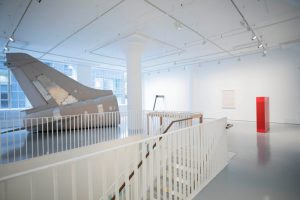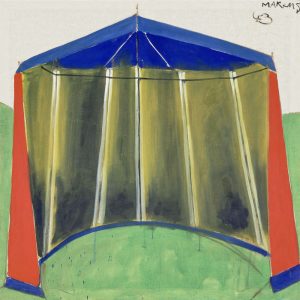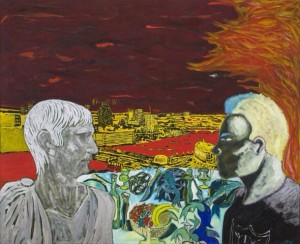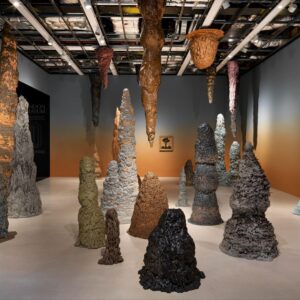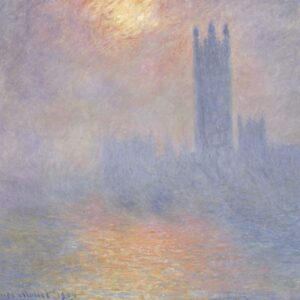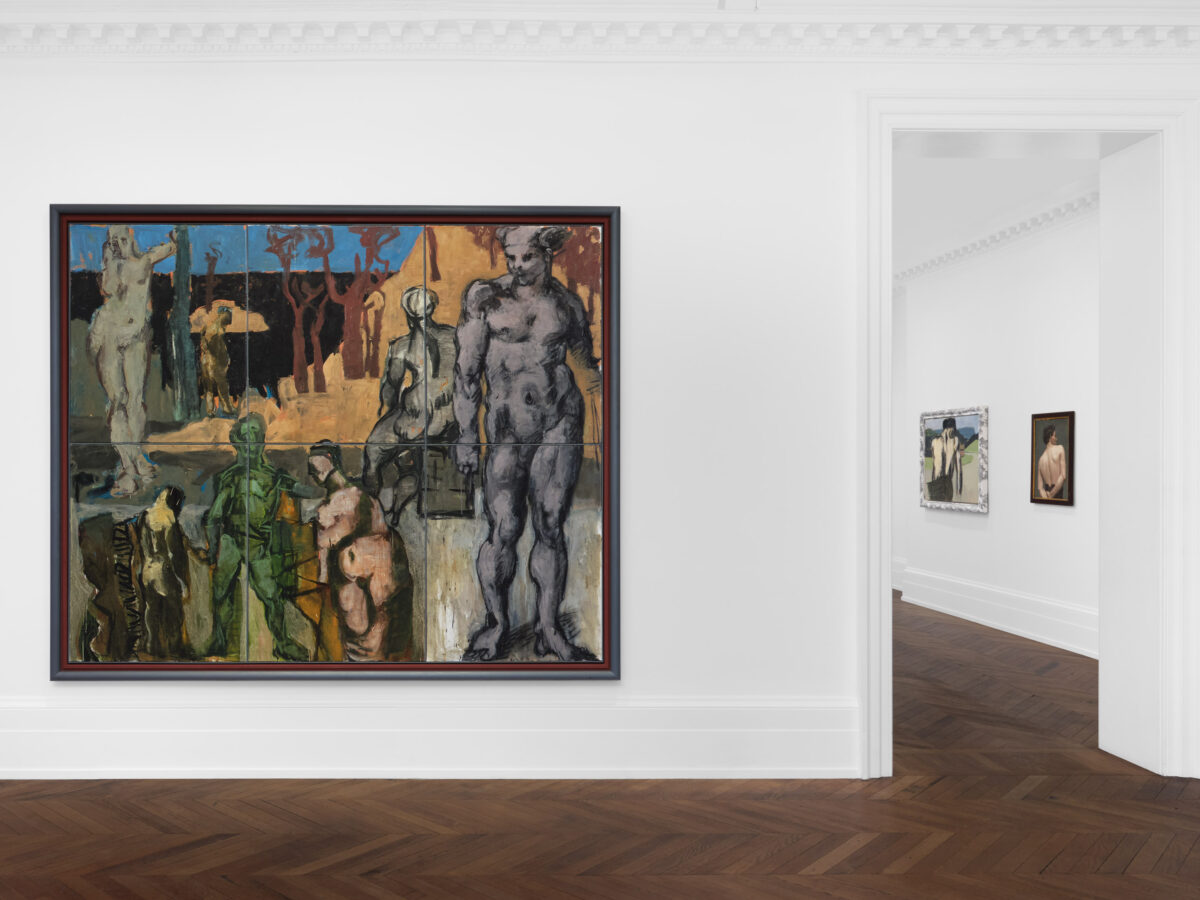
Michael Werner Gallery’s latest show, Markus Lüpertz – Pierre Puvis de Chavannes, is a fascinating commentary on the nature of abstraction, the process of embodiment in figurative painting, and the evolution of representative art over the last two centuries. By placing two artists of radically different eras, oeuvres, and processes beside one another, the show draws a unique point of comparison between the symbolism of Puvis de Chavannes and Lüpertz’s neo-expressionist work. Drawing attention to the process of history, the development of the figure of the artist, and Lüpertz’s engagement with the past in his ongoing work, Michael Werner Gallery presents a cerebral and challenging show characterised by the artist reflecting on his practice and his times.
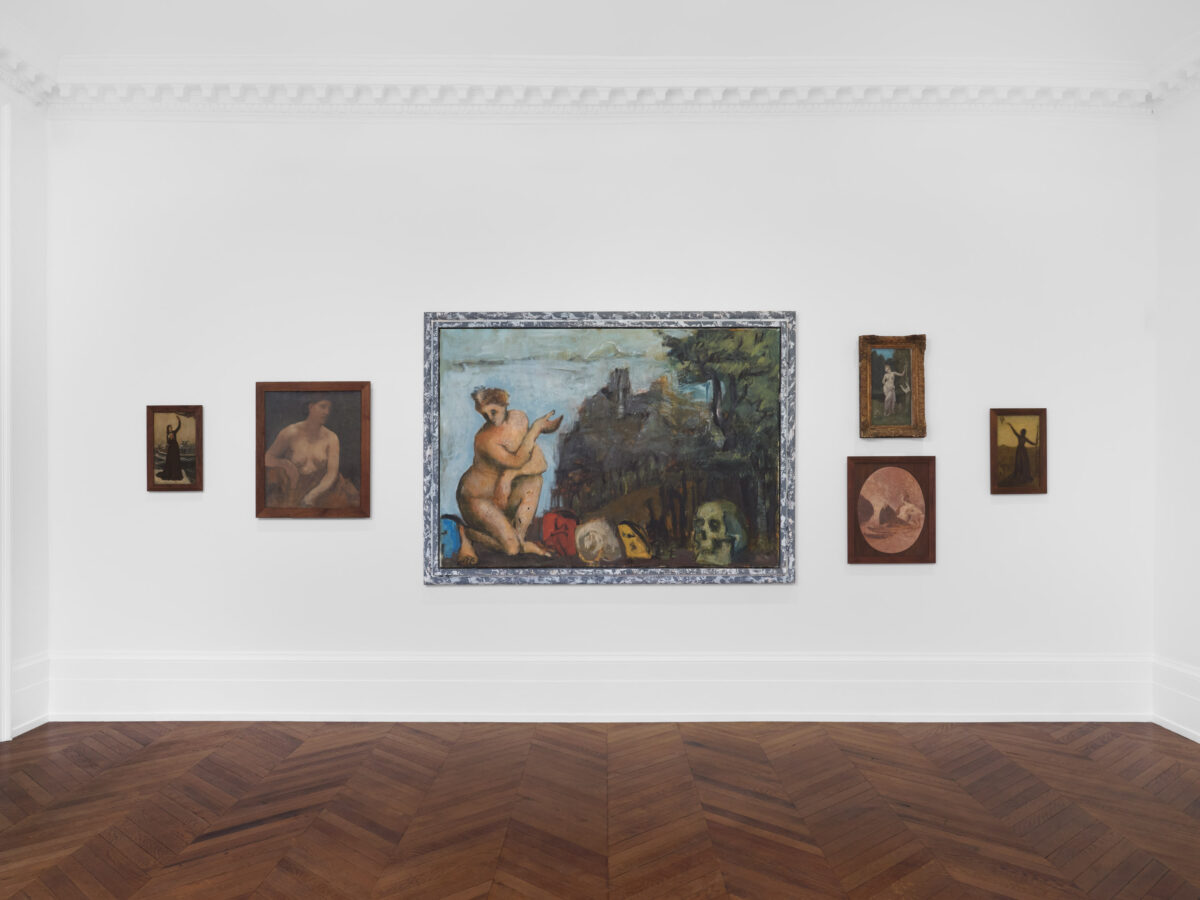
Besides more direct instances of homage in Lüpertz’s paintings, referencing forms and figures akin to those of Puvis de Chavannes on display, the interplay between the show’s images is grounded in the abstraction undertaken by both artists. The greater the degree of abstraction, the more present one can feel the hand of the artist and the process by which their images have been created, outlining a clear chronological narrative between Lüpertz’s forerunner and his own paintings. The more time passes, the more powerfully can one sense the role of the artist taking prescience over that of their subject. The show in question is defined by these dualities, moving back and forth across a developmental line trodden by many art historians tracing the rise of modern painting. However, what is unique about Lüpertz’s understanding of this process is how he references the loss that occurs when the subject of an artwork is obscured by the burgeoning potency of its creator, with the exhibition’s subtler narrative hinging on this fact.
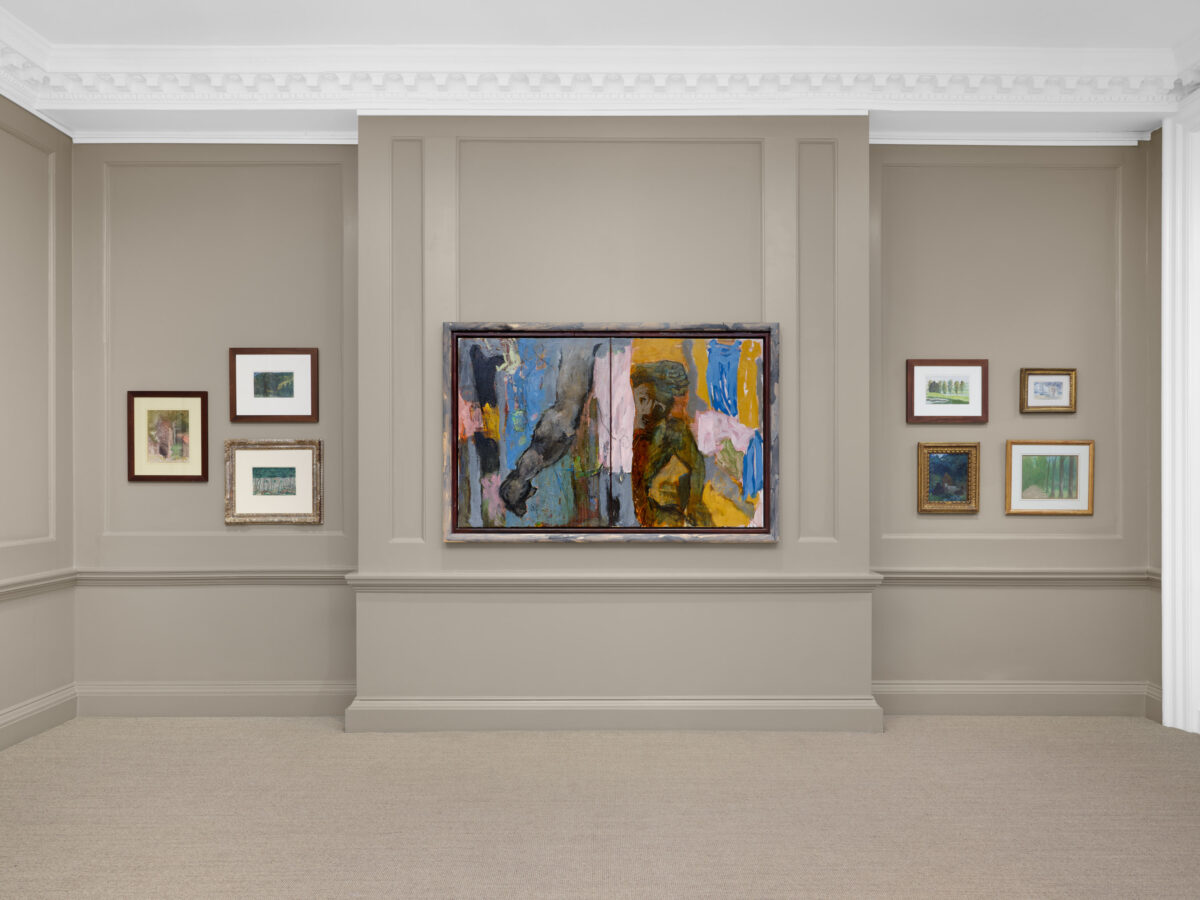
The Lüpertz works on display abound in classical imagery. From corpulent cherubs to voluptuous female nudes and their Arcadian pastoral lands, the paintings exhibit a drive toward contact with the past, its mythology, and its stories, only for the viewer to step closer and find something very deliberately and wonderfully amiss in their finer details. Unlike Puvis de Chavannes, Lüpertz’s figures require a much broader perspective to fully take shape; to decipher the visual information on the canvas, to make out the bodies, the trees, the faces, and gestures, the viewer must stand back. Conversely, getting too close to the canvas fragments its subject into abstract blocks of colour that challenge the sense of cohesion belonging to the overall image. This deployment of a greater degree of abstraction necessarily distances the artist and their audience from the objects being represented, and Lüpertz uses this movement, the momentum of an exaggerated gap coming between the audience and the subject of his art, that paradoxically grows the closer they come to it, to tell a story concerning the unreachability of our past.
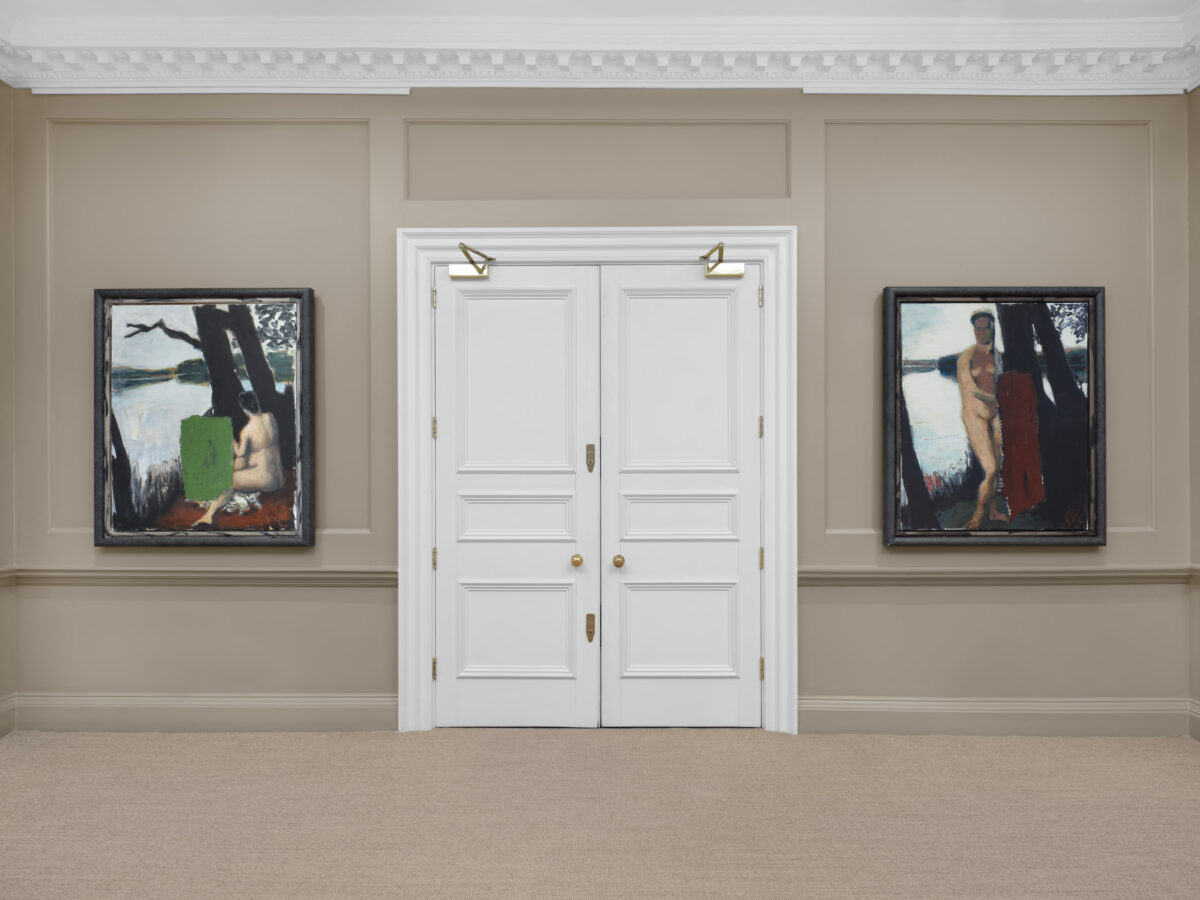
Modernity is often allied with individualism rising to new heights. Collapsing cultural traditions, value systems, and structures in the name of serving those presently engaged in them, the rise of expressionist and later neo-expressionist painting is one instance of how art has changed over the years, its locus of action being translated from the depiction of beautiful and intangible abstract ideas to serving those performing and engaging with its practice. Perhaps ironically, this shift of the stage on which art is performed, not toward and amongst the imagined gods and classical deities, but embedded in the earth, in the people that make it, from the ideal and abstract to the present and tangible, has been described by the increasing rise of abstraction in these new ‘grounded’ forms of painting and self-expression.
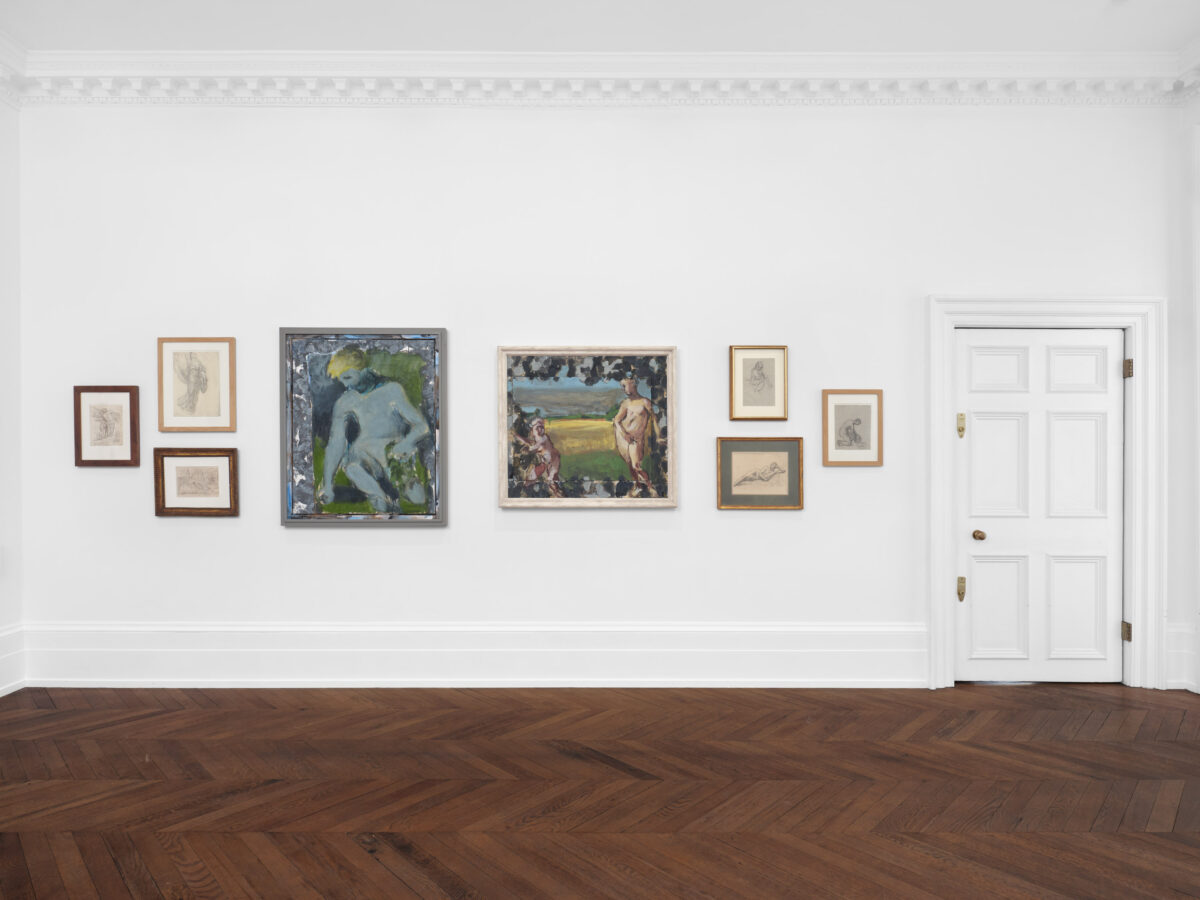
Lüpertz’s work has been made increasingly relevant by commenting on this shift and participating in it. Indeed, its studies of classical motifs are difficult to read outside of a sense of longing, of loss for what is being depicted. It doesn’t matter how close you get to the canvas; having been brought down to earth, the ‘ideal’ seems impossible to retrieve.
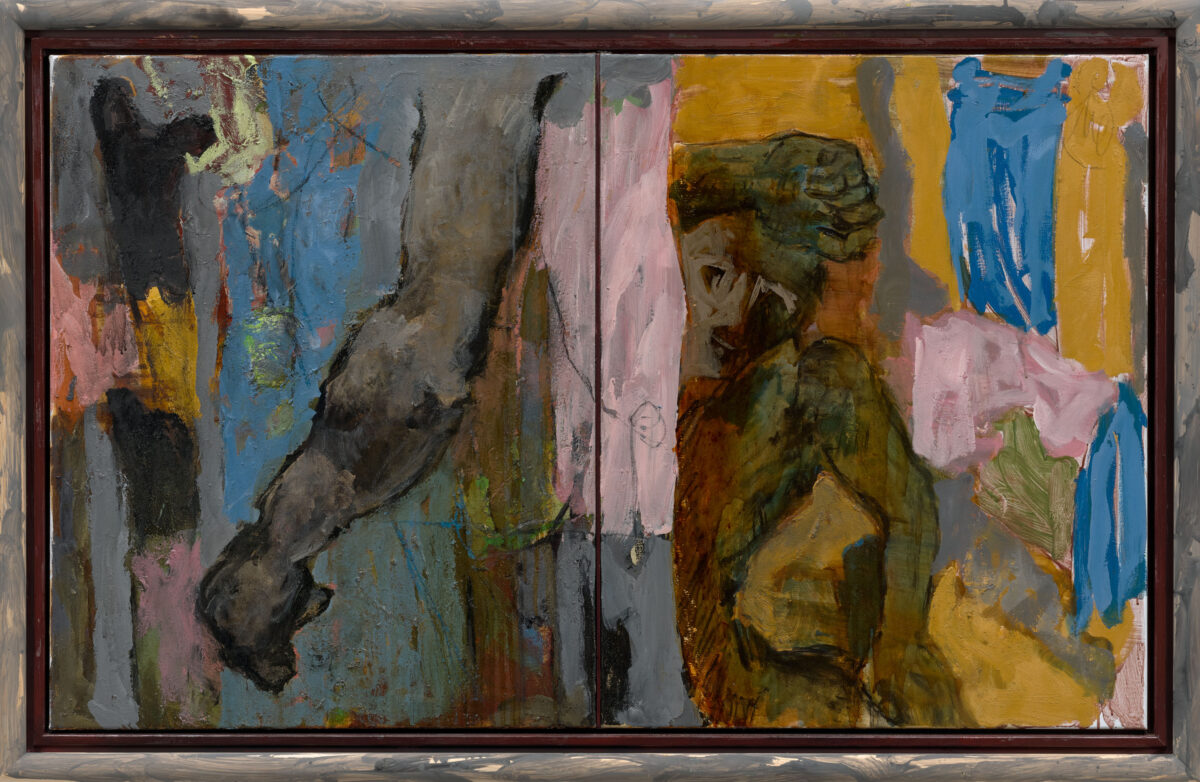
Considering this loss, what remains is the question of self-expression, and to outline the role of Lüpertz himself as the artist engaged in all this. In the 21st-Century, the self is often considered as the simple by-product of a biological and chthonic process. We are reminded of this perspective daily. It can be seen in the rise of algorithmic image generation, that is often wilfully misunderstood as producing ‘art’ through a complex system of averaging, having been advertised as imitative of the process of the artist. It can be seen in the leaps and bounds made in the fields of neuroscience, psychiatry, and clinical psychology, which have given people the ability to articulate more precisely than ever the physical and psychic mechanisms that characterise their drives and experiences. It can be seen in history, sociology, and how the internet has expanded the breadth of our ability to join the dots of how our present came to be. What is conceived as human follows where these fields lead, and is developed according to our systems of understanding, bringing the unknown into ever more detailed consciousness.
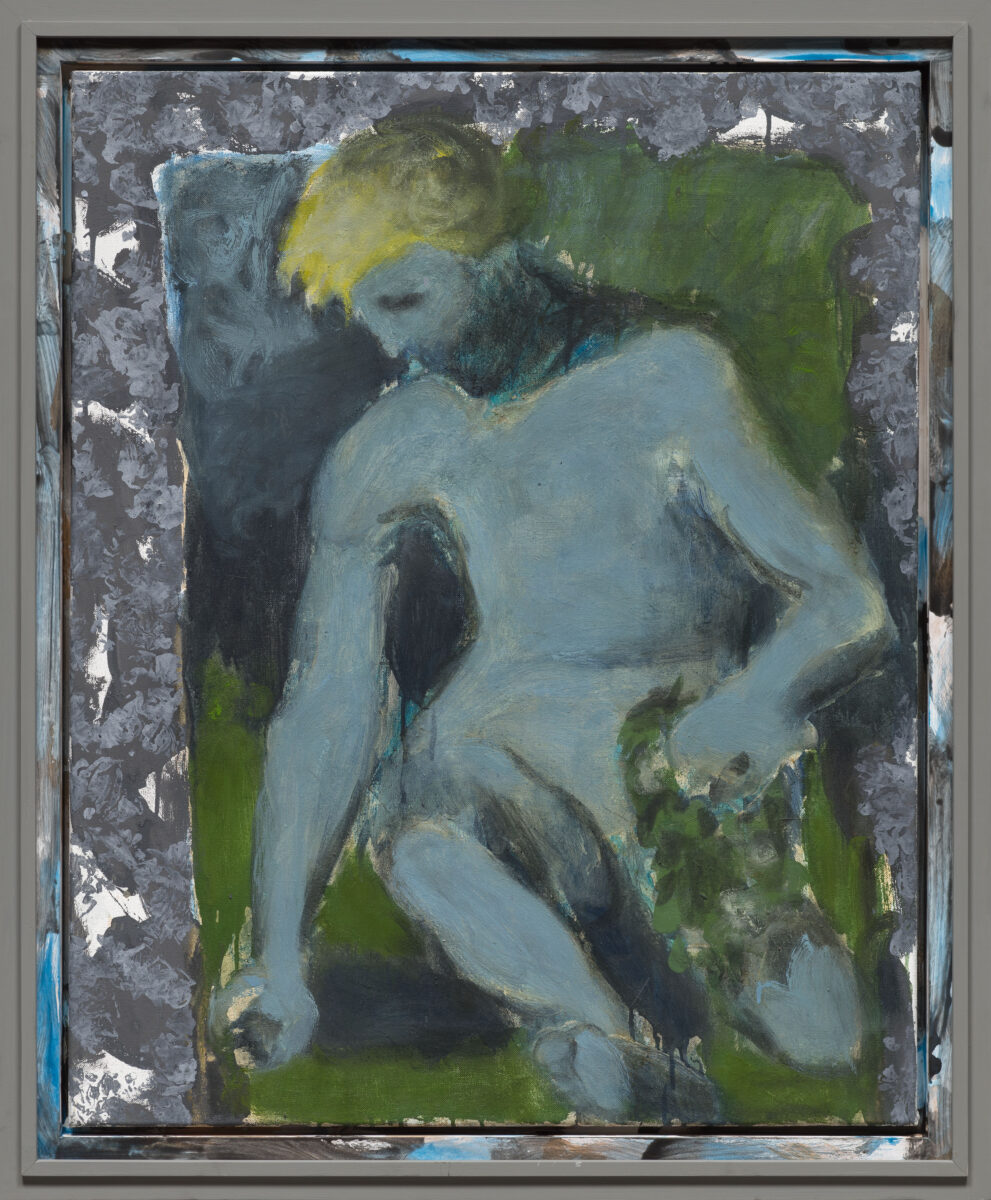
The question of defining the ‘self’ in ‘self-expression’ remains paramount, and Lüpertz’s painting engages directly in the lived experience of this philosophical process, exploring a kind of ‘chthonisation’ in modern art that reflects broader cultural activity and poses an implicit question to its audience. If the artist exerts more agency over the subject of their work today than ever before, showcasing their role in creating great works and their utilisation of old ideals, aesthetics, and histories, and yet simultaneously acknowledges their own grounding and being formed from worldly causes, ideas, and traditions, then what does their work express? In these latest paintings, Lüpertz offers a direction for possible answers: for artists to explore a sense of loss, or lack, in the postmodern individual, a yearning for the imagined yet simple relationship between well-defined objects and subjects, and to ask whether, if there once existed a more direct intimacy with our ideals and dreams, imagined or not, whether this might possibly be the case again. The identity of the future artist and their art hangs in the balance.
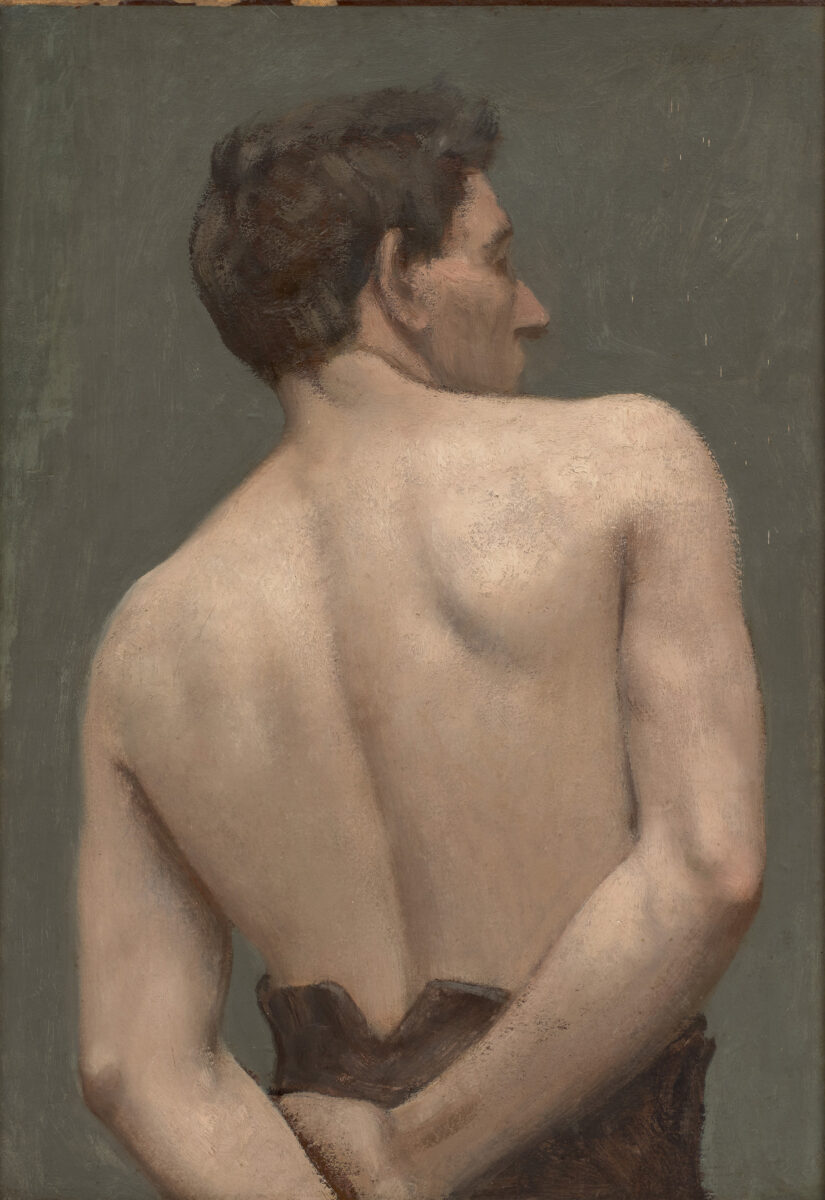
Markus Lüpertz – Pierre Puvis de Chavannes, 14th November 2024 – 1st February 2025 Michael Werner
